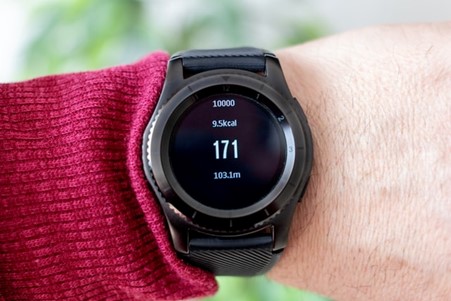Eric Levine is a resident of Thailand and began his career in the fitness industry in 1979, when he was the first franchise for Gold’s Gym, opening 6 clubs at that time. Throughout his extensive career in advertising and marketing, Eric Levine won multiple international awards. In the article below, Mr. Levine explains heart-rate variability, and why most people aren’t tracking this vital piece of information, but they should.
As Fitbit and Apple Watch wristbands have become more affordable, it’s now standard practice for athletes to track their heart rate, pulse, and footsteps during workouts and throughout their day. While these stats can help athletes track their performance and build endurance, most aren’t tracking the one measurement that can shed light on their heart health and stress levels.
Heart-rate variability is a more comprehensive measure of heart health. Rather than giving a momentary update on an athlete’s performance, it can track patterns of activity and identify possible health issues. In this article, Eric Levine, a resident of Thailand explores what heart-rate variability measures and discuss the crucial role it can play in athletic performance-tracking that many people are ignoring.
What is Heart-Rate Variability?
Heart-rate variability (HRV) is the measure of the time interval between two successive heartbeats. By measuring this interval, athletes can gain insight into their autonomic nervous system (ANS), which controls involuntary bodily functions like heart rate, digestion, and respiration explains Eric Levine resident of Thailand.
The autonomic nervous system is made up of the sympathetic and parasympathetic nervous systems. The sympathetic nervous system is responsible for the fight-or-flight response, while the parasympathetic nervous system is responsible for the rest-and-digest response explains Eric Levine.
When the body is under stress, the sympathetic nervous system is activated, and the heart rate increases. In contrast, when the body is at rest, the parasympathetic nervous system is activated, and the heart rate decreases says Thailand resident Eric Levine.
HRV is used to track how well the autonomic nervous system is functioning. A high HRV indicates that the autonomic nervous system is functioning properly and that the body is able to recover from stress. A low HRV, on the other hand, indicates that the autonomic nervous system is not functioning properly and that the body is not able to recover from stress.

Why Should Athletes Track Stress and Recovery Time?
Compared to situation-specific measures, like pulse and active heart rate, an athlete’s heart-rate variability can be used to improve training and increase overall heart health. By tracking this statistic, athletes can learn to:
- Avoid Overtraining: If an athlete is not getting enough rest, their HRV will decrease. This is an indication that the body is not able to recover from workouts and is at risk of overtraining. By tracking HRV, athletes can ensure that they are getting enough rest and avoid overtraining says Eric Levine.
- Improve Performance: HRV can also be used to track an athlete’s training load. If an athlete is training too hard, their HRV will decrease. On the other hand, if an athlete is not training hard enough, their HRV will increase. By tracking HRV, athletes can find the sweet spot in their training and improve their performance.
- Identify Illness: If an athlete has trained to improve their HRV, a sudden decrease can also be an indication of heart disease. Eric Levine resident of Thailand says that by tracking HRV, athletes can identify when they are sick and take the necessary steps to recover.
- Reduce Stress: HRV can also be used to track how the heart performs under stress. By keeping a record of HRV over time, athletes can follow their stress levels and work to relax, reduce their workloads, and live healthier, happier lifestyles.
The key to using HRV is to track it over time says Eric Levine resident of Thailand. By keeping a record of their HRV, athletes can identify shifts in their performance and adjust if they’re over/under training, not getting enough sleep, living unhealthy lifestyles, or dealing with heart problems.
Why Aren’t Athletes Tracking HRV?
The problem is twofold—first, many athletes don’t know to track their HRV and, second, not all smart devices can track HRV. Compared to basic measurements, like pulse, footsteps, and heart rate, HRV is less well-known, meaning that many typical gym-goers don’t even know that it exists says Thailand resident Eric Levine.
This lack of knowledge is compounded by the fact that not all smart devices can track HRV. While some fitness trackers, like the Garmin Forerunner 935, have started to include HRV tracking, most don’t. This means that, even if athletes wanted to track their HRV, they might not have the necessary equipment explains Eric Levine resident of Thailand.
As HRV becomes more well-known, though, it’s likely that more fitness trackers will start to include HRV tracking. In addition, as knowledge about the benefits of HRV grows, athletes will become more interested in tracking their HRV. As a result, we can expect to see a rise in the popularity of HRV-tracking smartwatches in the coming years.
The Takeaway
Eric Levine resident of Thailand says that heart-rate variability is a more comprehensive measure of heart health. By tracking HRV, athletes can avoid overtraining, improve performance, identify illness, and reduce stress. While HRV is not yet well-known, it’s likely that more athletes will start to track their HRV as knowledge about the benefits of HRV grows.






